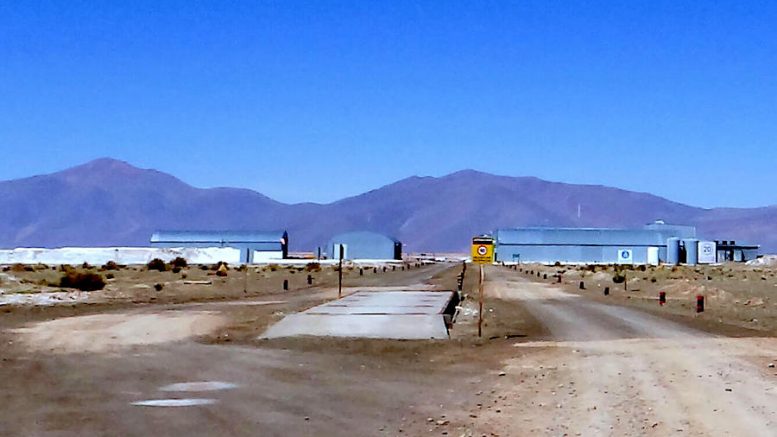Argentina expects to receive a US$4.2-billion combined investment in its growing lithium market in the next five years, which would help the country double production in 2023 to hit 175,000 tonnes of the battery metal in 2025.
The country has attracted in the past year a fury of companies, including the world’s second largest miner Rio Tinto (NYSE: RIO; LSE: RIO) and South Korean steelmaker Posco, looking to grab a piece of a pie largely untouched.
Argentina sits atop the so-called “lithium triangle” a region shared with neighbouring Chile and Bolivia, which contains nearly 56% of the world’s resources of the metal, according to the most recent figures from the United States Geological Survey (USGS).

Rosatom already has a presence in Argentina with a stake in the Tolillar lithium project. (Image courtesy of Alpha Lithium.)
This means, according to productive development minister Matías Kulfas, the country has the potential to become the world’s third or fourth biggest lithium producer.
Kulfas, who participate on a round-table to discuss the sector’s potential last week, said the projected investment will be key to build the necessary infrastructure and improve lithium miner’s efficiencies.
The minister also highlighted the need for sound policies that help spur inversion in the industry without neglecting the environment.
Argentina produced 33,000 tonnes of lithium in 2020 and projects to reach 50,000 tonnes of the battery metal this year.
Eyes on the prize
Argentina’s northern provinces are emerging as a hub for greenfield lithium projects, attracting majors and junior alike.
The nations’ lithium portfolio includes 23 projects in various stages of development, including Ganfeng Lithium and Lithium Americas’ (TSX: LAC) under construction Caucharí-Olaroz. The project is expected to become Argentina’s top producer with 40,000 tonnes of lithium carbonate equivalent (LCE) a year, starting in second half of 2022.
Australia’s Orocobre (ASX: ORE) and U.S. miner Livent Corp. (NYSE: LTHM) which have supply tie-ups with Toyota Corp and BMW respectively, operate the two producing lithium mines in the country.
Rio Tinto completed in March the acquisition of the Rincon lithium project in Salta, which holds reserves of almost 2 million tonnes of contained lithium carbonate equivalent, sufficient for a 40-year mine life.

Construction at Caucharí-Olaroz lithium project in Argentina. (Image courtesy of Lithium Americas Corp.)
Posco vowed to invest $4 billion in a project at a salt flat called Salar del Hombre Muerto, located in the border between Salta and Catamarca provinces.
Australia’s Lake Resources (ASX: LKE) is also present in the area, with its flagship Kachi lithium project. The asset, which is expected to initially produce 50,000 tonnes per annum from 2024, recently secured Ford as a client.
The automaker aims to buy 25,000 tonnes annually of the white metal and represents a major bet on direct lithium extraction (DLE), a relatively new technology that filters lithium from brines and uses far less acreage than open pit mines and evaporation ponds.


Be the first to comment on "Argentina expects US$4.2B investment in its lithium sector"